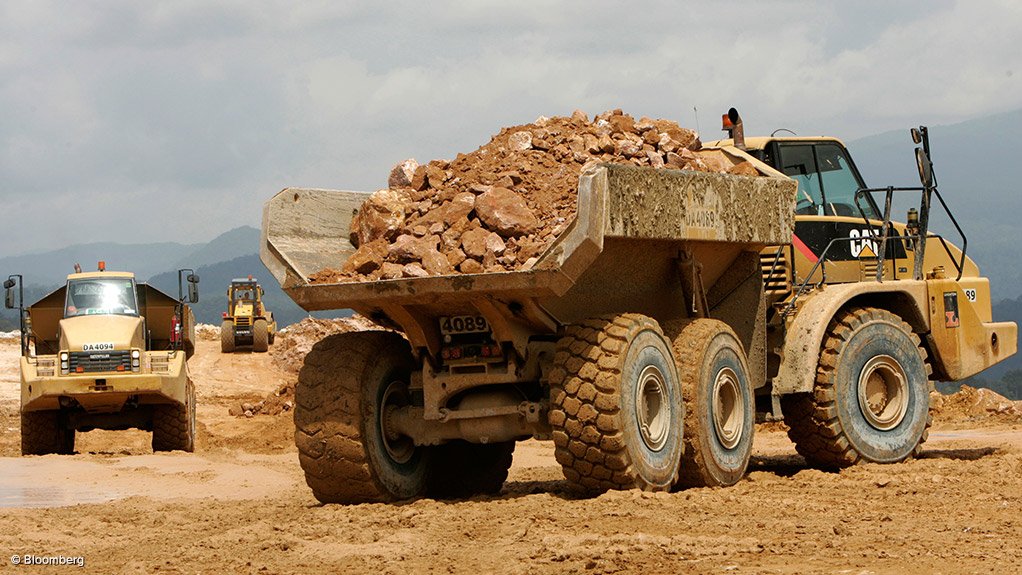Two of the additional regulations pertaining to the operation of diesel- powered trackless mobile machinery (TMM) on mines – which were published in February 2015 – have not yet come into effect, as the Department of Mineral Resources (DMR) has yet to stipulate a date when the specific obligations become operable, owing to uncertainty regarding appropriate fail-to-safe technology, says Webber Wentzel partner in employment and employee benefits Kate Collier.
This delay could result in employers having to increase their focus on the ability of TMM operators and pedestrians to safely take evasive action to prevent a potential collision once the presence of a pedestrian has been detected – seeing as this is not currently required to occur without human intervention and implementing policies to address employees who fail to do so timeously and safely.
She explains, however, that “the DMR, employers and providers of TMM technology are continuously engaging in new developments in this regard” and advises that employers consider these fail-to-safe systems so as to avoid sanctions once the regulation does come into effect.
Collier states that the 2015 amendments to the Chapter 8 regulations – which address the safe use of TMM on mines – of the Mine Health and Safety Act (MHSA), published by former Mineral Resources Minister Ngoako Ramatlhodi, which came into effect as of May 27, 2015, are necessary and practical in the current mining environment.
Collier explains that the regulations are meant to be applied in conjunction with the systems and safety mechanisms set out in the Mandatory Code of Practice for the Operation of TMMs in Section 9 of the MHSA.
They state that employers are now specifically required to take reasonably practicable measures to ensure that pedestrians are prevented from being injured as a result of collisions with TMMs.
“Where there is a significant risk of collision, employers must install automatic detection systems on all electrical or battery-powered TMMs. The system, having detected a pedestrian in a TMM’s vicinity, must [alert] the operator and pedestrian by means of an effective warning. If neither the operator nor the pedestrian takes action to avoid a collision, the system must include further means to slow the TMM down to a safe speed and automatically engage the brakes without human intervention,” she clarifies.
The regulations for diesel-powered TMMs are the same as those for electrical TMMs, except for the requirement stating that the TMM must ‘fail to safe’ without human intervention in the event of no action being taken by the operator or pedestrian to avoid a collision.
Collier points out that the fail-to-safe systems are meant to prevent accidents when all other measures have failed, acting as a last line of defence. Therefore, if employers comply with the regulations that have already come into effect, such as an automatic detection system, and employees are trained to understand and act in accordance with these systems, there should not be any additional risk caused by the delay of this particular regulation coming into effect.
The regulations now also require that employers take measures to prevent collisions between TMMs and rail-bound equipment, and that detection systems for TMMs and locomotives warn operators of each other’s presence through an effective warning.
Collier advises that the definition of such a warning depends on available technology and the hazards and risk assessment of each workplace. “What may be effective in one workplace may not necessarily be effective in another,” she explains, adding that, generally, warnings should entail either a sound, light or vibration on the operator’s or pedestrian’s body or equipment.
Employers must now ensure that the design, construction and maintenance of roadways are appropriate for the type and category of TMM employed. They must also attempt to prevent injuries resulting from any inadvertent movement while the TMM is parked.
Additional measures must be taken to prevent injury caused by objects falling onto a TMM, or as a result of operators or passengers falling or being ejected from a TMM in motion. Moreover, employers must introduce measures to prevent injury resulting from restricted operator visibility, operator fatigue or the overturning of a TMM.
“Employers must take reasonably practicable measures to ensure that TMMs are designed, constructed and maintained so that persons getting [on] and working on, and getting off them can do so safely,” Collier elaborates, adding that they should also have systems in place to ensure that unauthorised persons do not ride on or operate any TMMs.
The DMR is the regulator in respect of mines, including occupational health and safety. The Mine Health and Safety Inspectorate falls within the DMR, oversees safety at mines in South Africa and is responsible for determining sanctions for contravention of the MHSA.
Collier warns that several enforcement actions may be taken to address the failure to comply with MHSA regulations. She notes that “inspectors may issue a Section 54 instruction and halt some or all of the operations of a mine until the necessary remedial action is taken”. Other enforcement actions include administrative fines or the criminal prosecution of an employer, employee or other person when a breach has been observed.
EMAIL THIS ARTICLE SAVE THIS ARTICLE
To subscribe email subscriptions@creamermedia.co.za or click here
To advertise email advertising@creamermedia.co.za or click here











